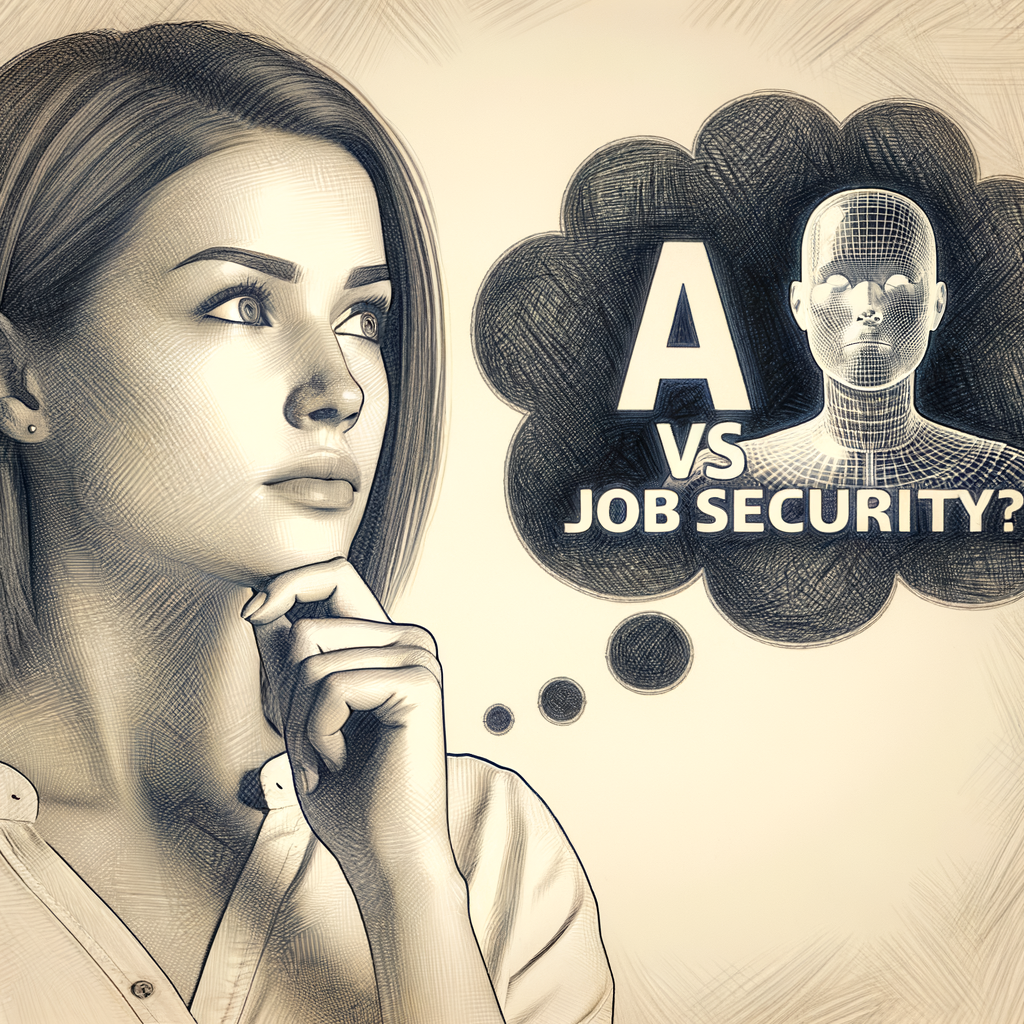
Generative AI holds transformative potential across industries but also presents significant ethical and societal challenges. This article examines the hidden risks, including the spread of deepfakes, AI bias, and intellectual property concerns, as well as societal impacts like privacy threats, employment disruption, and declining public trust. It highlights the regulatory and legal challenges posed by AI's rapid advancement, emphasizing the need for new ethical standards and global cooperation.
The article also delves into mitigation strategies, highlighting both technical solutions and ethical guidelines, supported by case studies and expert insights. Looking ahead, it discusses future trends and the balance between AI's benefits and potential risks, urging proactive measures to harness AI responsibly.
Outline
1. Introduction
2. The Basics of Generative AI
3. Ethical Dilemmas of Generative AI
4. Societal Risks of Generative AI
5. Regulatory and Legal Challenges
6. Mitigating the Risks of Generative AI
7. Case Studies
8. The Future of Generative AI
9. Conclusion
10. Frequently Asked Questions (FAQs)
1. Introduction
a. Definition of Generative AI
Generative AI refers to a category of artificial intelligence systems designed to create new content, whether it’s text, images, music, or even entire virtual environments. By utilizing advanced algorithms such as deep learning and neural networks—especially Generative Adversarial Networks (GANs) and Transformer models like GPT—generative AI can create outputs that closely resemble human-made content.
b. Importance and Relevance
The rapid advancements in generative AI have opened up new possibilities across sectors like entertainment, education, healthcare, and more. However, with these opportunities come significant ethical and societal challenges that must be addressed. Keywords such as "AI ethics," "AI bias," and "deepfakes" have become central to discussions around generative AI.
c. Overview of the Article
This article explores the hidden challenges of generative AI, focusing on ethical dilemmas, societal risks, regulatory gaps, and potential mitigation strategies. By examining both the negative and positive impacts, we aim to provide a comprehensive understanding of generative AI's current landscape and future direction.
2. The Basics of Generative AI
a. What is Generative AI?
Generative AI is a subset of artificial intelligence that creates new data by learning from existing data. Unlike traditional AI, which focuses on recognizing patterns and making decisions, generative AI synthesizes information to produce original content, such as art, music, and even complex narratives.
b. Key Technologies Underpinning Generative AI
Technologies like Generative Adversarial Networks (GANs), Variational Autoencoders (VAEs), and Transformer models enable the AI to learn from vast datasets and generate high-quality outputs that can mimic human creativity. The rise of these technologies has fueled the rapid growth of generative AI in various industries.
Applications of Generative AI
Generative AI has a wide range of applications, from content creation and design to drug discovery and financial modeling. In the creative industry, AI can assist in generating artwork, composing music, or writing articles. In healthcare, AI can help predict molecular structures for new drugs, driving innovation in AI-driven drug discovery.
3. Ethical Dilemmas of Generative AI

a. Deepfakes and Misinformation
One of the most concerning aspects of generative AI is its ability to create deepfakes—hyper-realistic but fake images, videos, or audio recordings. These can be used to spread misinformation, manipulate public opinion, or harm individuals, making AI ethics a crucial area of focus.
b. AI Bias and Discrimination
Generative AI models can inadvertently perpetuate or even amplify existing biases present in the training data. This can lead to discriminatory outcomes in areas like hiring, lending, or law enforcement, where AI bias has become a significant concern.
c. Intellectual Property and Ownership Issues
The creative outputs of generative AI raise complex questions about intellectual property rights. Who owns the content created by AI? Is it the developer, the user, or the AI itself? These questions remain largely unresolved, highlighting the need for new AI regulations.
4. Societal Risks of Generative AI

a. Impact on Employment
As generative AI becomes more sophisticated, it threatens to displace jobs in various sectors, particularly those involving routine or creative tasks. While AI can augment human capabilities, it also poses a risk of widening the gap between skilled and unskilled workers, a trend known as AI-driven job displacement.
b. Threats to Privacy and Security
Generative AI’s ability to create realistic synthetic data poses a significant threat to privacy. It can generate fake identities, forge documents, and even create realistic social media profiles, making it easier for malicious actors to deceive individuals and organizations.
c. Social Manipulation and Public Trust
The misuse of generative AI to create convincing fake news, deepfakes, or propaganda can undermine public trust in information sources. This erosion of trust can have far-reaching consequences for democratic institutions and societal cohesion.
5. Regulatory and Legal Challenges

a. Current Regulations and Legal Gaps
Existing regulations are often inadequate to address the unique challenges posed by generative AI. For example, laws governing intellectual property, privacy, and data security are not well-equipped to handle AI-generated content.
b. International Perspectives and Cooperation
Addressing the risks of generative AI requires international cooperation, as the technology’s impacts are global. Different countries have varying approaches to AI regulation, and a lack of consensus could lead to loopholes and inconsistent enforcement.
c. The Need for New Ethical Standards
To mitigate the risks associated with generative AI, new ethical standards must be developed. These standards should focus on transparency, accountability, and the fair use of AI technologies.
6. Mitigating the Risks of Generative AI

a. Technical Approaches to Mitigate Risks
Researchers are developing various technical solutions to mitigate the risks of generative AI, such as AI models that can detect deepfakes or bias. These tools are crucial for safeguarding against the misuse of generative AI.
b. Ethical Guidelines and Best Practices
Organizations and developers must adhere to ethical guidelines when creating and deploying generative AI systems. This includes ensuring that AI is used responsibly, without causing harm to individuals or society.
c. Role of Stakeholders (Governments, Companies, and Individuals)
Governments, companies, and individuals all have a role to play in managing the risks of generative AI. Governments must enact appropriate regulations, companies must prioritize ethical AI development, and individuals must stay informed about the potential risks.
7. Case Studies
a. Notable Examples of Generative AI Misuse
The misuse of generative AI has already been documented in several high-profile cases, such as the creation of deepfake videos for political manipulation or revenge. These examples highlight the urgent need for regulatory action.
b. Successful Implementations with Minimal Risks
There are also positive examples of generative AI being used responsibly, such as in personalized education or healthcare. These case studies demonstrate that, with proper oversight, generative AI can have significant benefits.
8. The Future of Generative AI
a. Emerging Trends and Developments
As generative AI continues to evolve, several trends are emerging, such as the integration of AI with other technologies like blockchain and quantum computing. These developments could further expand the capabilities and risks of generative AI.
b. Potential for Positive Impact
Generative AI holds the potential to revolutionize industries, from creative arts to scientific research. By automating routine tasks and generating new insights, AI can free up human creativity and drive innovation.
c. Challenges to Overcome
Despite its potential, several challenges remain, including ethical concerns, regulatory hurdles, and the need for greater public awareness. Addressing these challenges will be key to realizing the full benefits of generative AI.
9. Conclusion
a. Recap of Key Points
Generative AI is a powerful technology with the potential to transform industries and society. However, it also poses significant ethical, societal, and regulatory challenges that must be addressed.
b. Final Thoughts
The future of generative AI will depend on our ability to balance innovation with responsibility. By proactively addressing the risks, we can harness the power of AI for the greater good while minimizing its potential harms.
10. Frequently Asked Questions (FAQs)

a. What is generative AI, and how does it work?
Generative AI refers to artificial intelligence systems that can create new content by learning from existing data. It works by using algorithms like GANs and VAEs to generate outputs that mimic human creativity.
b. What are the main ethical concerns with generative AI?
The main ethical concerns include deepfakes, misinformation, AI bias, and intellectual property issues. These concerns arise from the AI’s ability to create realistic but potentially harmful content.
c. How Can We Mitigate the Risks of Generative AI?
Risks can be mitigated through technical solutions, ethical guidelines, and coordinated efforts by governments, companies, and individuals. Ensuring transparency and accountability in AI development is crucial.
d. What does the future hold for generative AI?
The future of generative AI is promising, with potential applications in various fields. However, significant challenges remain, including ethical dilemmas and regulatory gaps that need to be addressed.

